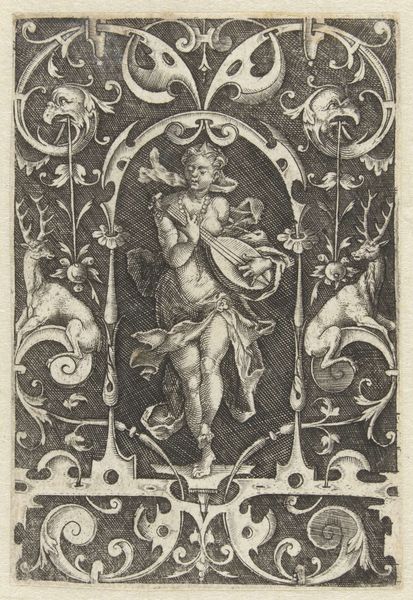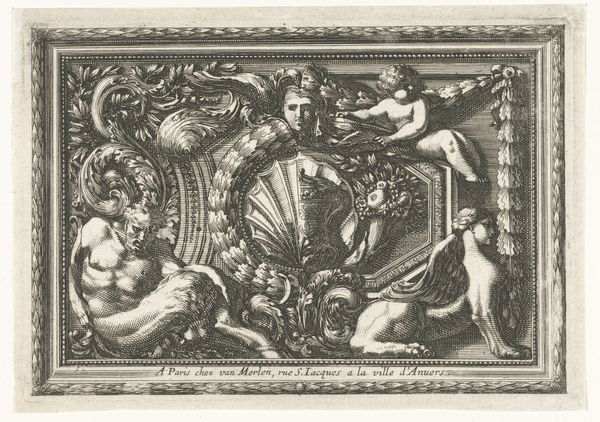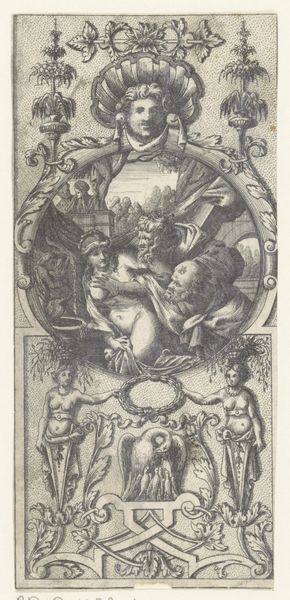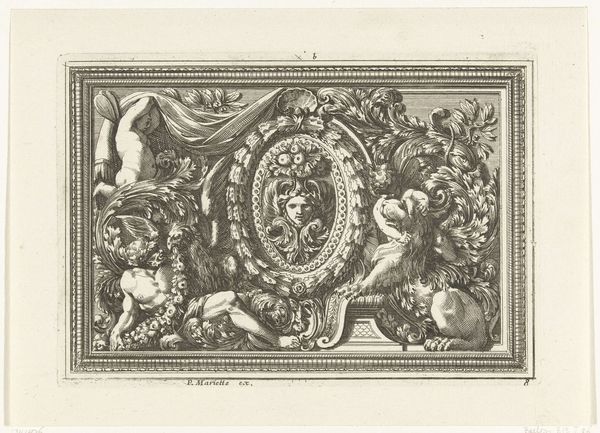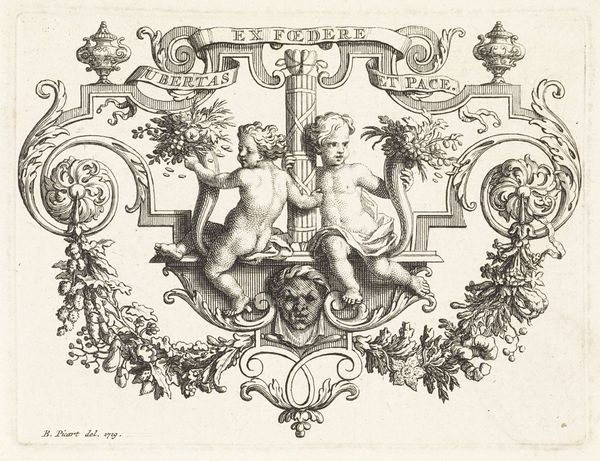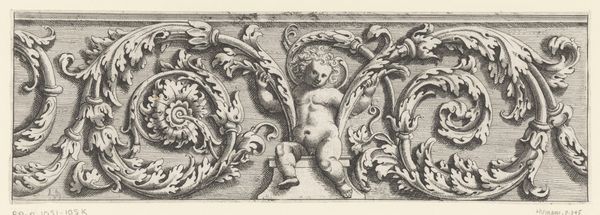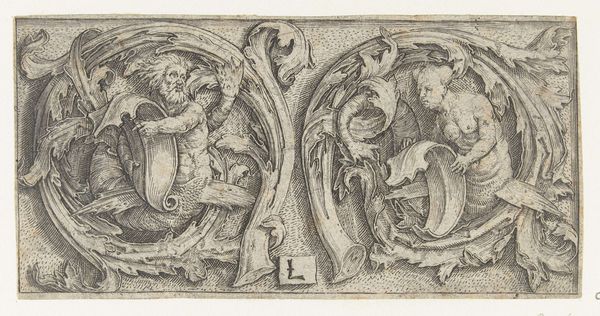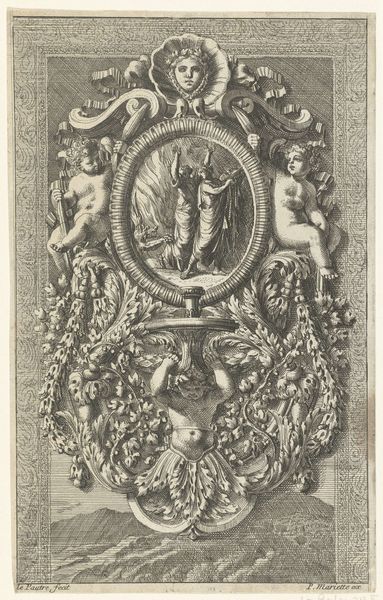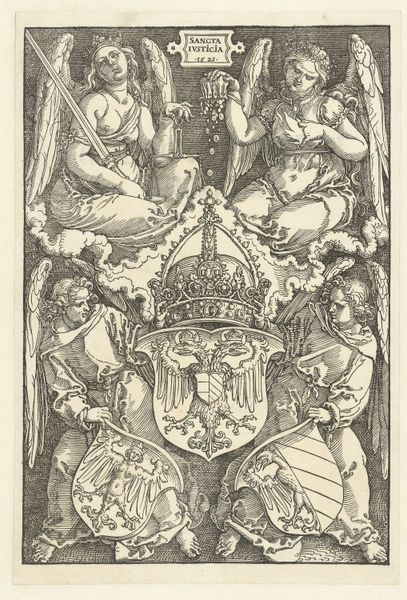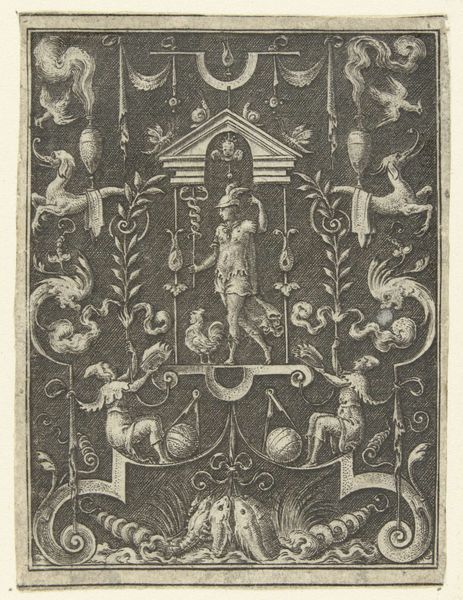
print, engraving
#
portrait
# print
#
figuration
#
11_renaissance
#
northern-renaissance
#
engraving
Dimensions: height 75 mm, width 115 mm
Copyright: Rijks Museum: Open Domain
Curator: Here we have "Two Medallions with Putti on Clouds" by Lucas van Leyden, created around 1517. It's an engraving, currently held in the Rijksmuseum. What are your initial thoughts? Editor: It's incredibly detailed for such a small print. Look at the precision of the lines defining the clouds and the putti's bodies. It looks like a very painstaking and skillful making. Curator: Absolutely. The Northern Renaissance had a real fascination with detail, and van Leyden was a master of engraving. This piece offers insights into the artistic trends of the era. The putti themselves are fascinating. These cherubic figures, derived from classical art, were very fashionable then. Editor: Fashionable, and significant. The use of copper engraving—requiring serious tooling—speaks volumes. Were these prints common in homes, or were they luxury items that a few could enjoy? Curator: That’s a critical question. Prints like these allowed for the wider dissemination of images, although, yes, owning artwork would still have been mostly limited to the upper classes. This availability also played a crucial role in standardizing imagery and spreading iconographic trends. The symbols these putti hold— the mallet, perhaps alluding to human effort in relation to celestial ideals, show some intellectual trends during that period. Editor: Looking closely, the lines created from the engraving shape more than form: there is also movement, suggesting dynamism of labor in this period. Curator: Interesting, but that could be the conventional manner the author used in creating these shapes; after all it’s an adopted trend, from earlier examples in Italy, adapted in the north. Editor: Yet it highlights the impact of image circulation—and that's what fascinates me most about art of this time: a shift from unique crafted items to something reproducible and widely distributed... how it was conceived and its impact is significant. Curator: It shows us something of cultural values during the early 16th century. And yes, the reproducibility surely had influence, socially speaking, far beyond these details that speak volumes. Editor: Thank you for illuminating its significance. Curator: And thank you for pointing towards materials and their distribution!
Comments
No comments
Be the first to comment and join the conversation on the ultimate creative platform.
